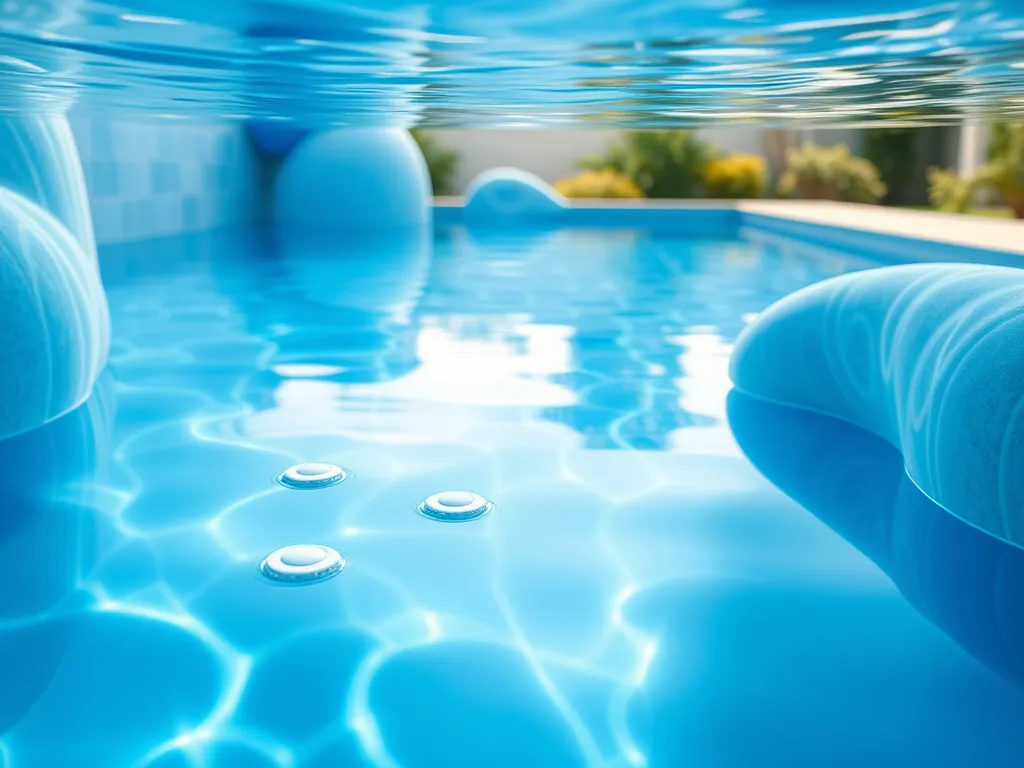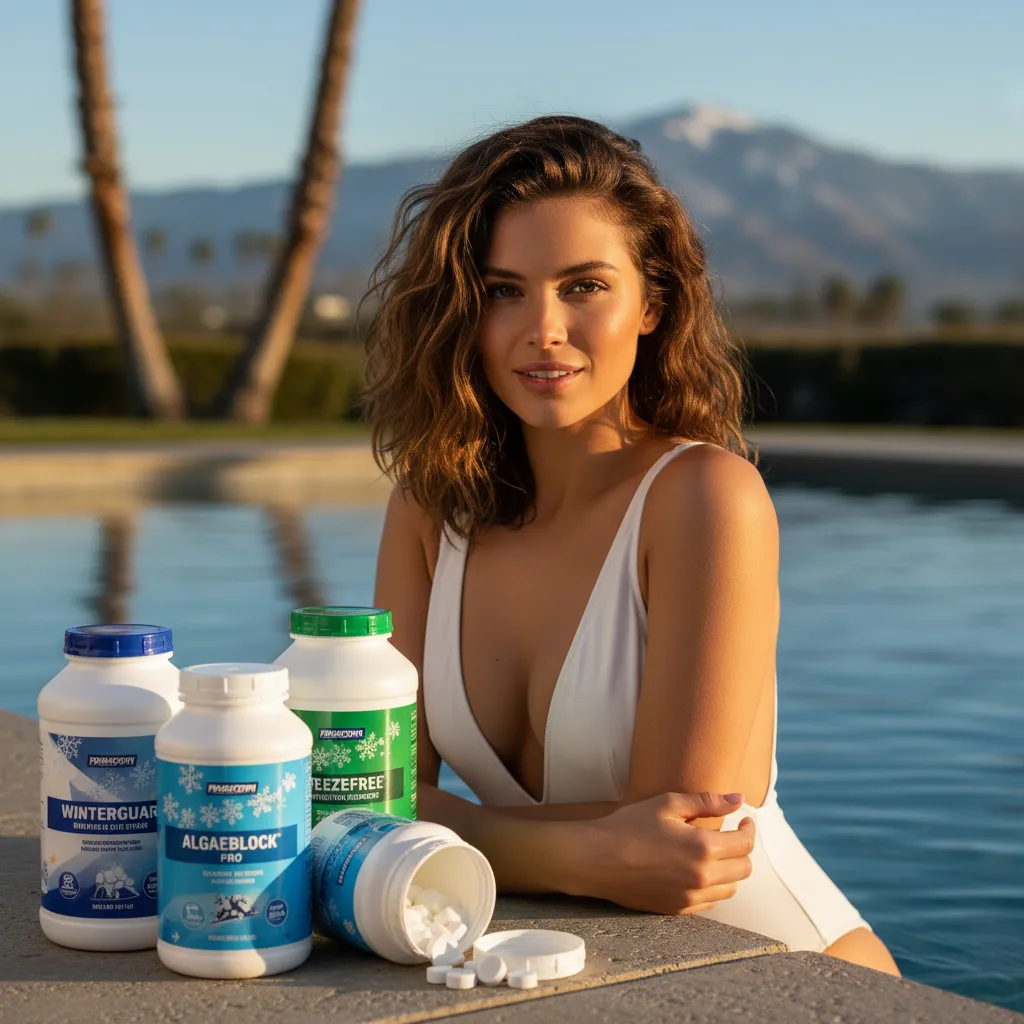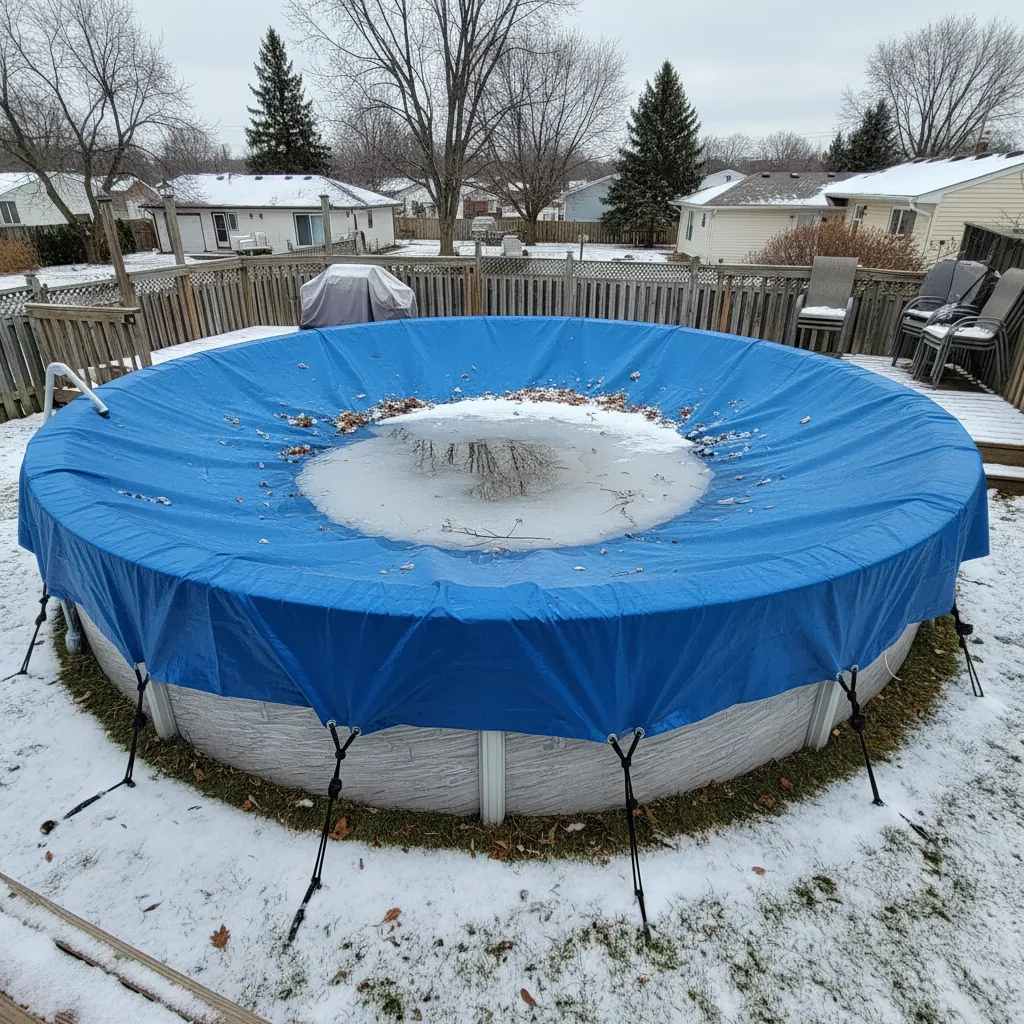Chlorine Dosage Calculator for Water Treatment
Published on: April 13, 2025 | Last Updated: April 13, 2025
Written By: Rachael Weatherbottom
Need to disinfect water properly? Use this chlorine dosage calculator to find how much chlorine you need. It works for wells, pools, and small water systems. Just enter your water flow, chlorine demand, and desired residual. We’ll do the math instantly!
Chlorine Calculator
How to Use
- Enter daily water flow in million gallons per day (MGD)
- Enter chlorine demand from water testing (mg/L)
- Enter your target chlorine residual (mg/L)
- Click calculate for required chlorine amount
Always test water before treatment. Safety gear required when handling chlorine. Actual needs may vary with temperature and contaminants.
Crucial Winterizing Products
"The all-in-one solution for a guaranteed clear spring opening."
All-in-One Closing Chemical Kit
Winter demand is high - check stock
"The 'set & forget' option. This is the easiest winterizing I've ever done."
Simple 3-in-1 Winterizing Balls
Winter demand is high - check stock
"Invest once to protect your liner and prevent a swamp in the spring."
Heavy-Duty Winter Pool Cover
Winter demand is high - check stock
Factors Influencing Chlorine Dosage Requirements
Maintaining proper chlorine levels requires balancing multiple variables. Even minor miscalculations can lead to algae growth or chemical irritation. Let’s break down the critical elements affecting your chlorination strategy. One important aspect of this is using dilute pool chlorine helps to ensure safe and reliable sanitation while minimizing risks of over-chlorination.
Pool Volume and Water Capacity
Water volume directly determines chlorine needs. A 10,000-gallon pool requires 2-4 ounces of 10% liquid chlorine to raise levels by 1 ppm. Use this formula for rectangular pools: The right balance of chlorine is essential for keeping the water clean and safe. An ideal chlorine diving pool offers clear water and proper sanitation for all swimmers.
- Length (ft) × Width (ft) × Average Depth (ft) × 7.5 = Total Gallons
Irregular shapes need multiplier adjustments. For kidney-shaped pools, use 5.9 instead of 7.5. Saltwater pools often require 20% less chlorine due to continuous generator output. This is important because maintaining the right ideal salt level contributes to overall pool health. An ideal salt level helps ensure effective sanitation and swimmer comfort.
Existing Chlorine Concentration and Demand
Test free chlorine (FC) and combined chlorine (CC) before dosing. The ideal FC range is 1-3 ppm for residential pools. Combined chlorine above 0.5 ppm indicates contamination, requiring breakpoint chlorination: 10× the CC value in FC addition. For example: Pool owners should also consider the different types of chlorine available for water sanitation. Each chlorine type, such as liquid, granular, or solid, has its own benefits and uses in maintaining clean water.
| Current CC Level | Required FC Shock |
|---|---|
| 0.5 ppm | 5 ppm |
| 1.0 ppm | 10 ppm |
Bather Load and Environmental Factors
Each swimmer adds 0.5 ppm chlorine demand per hour. Heavy rainfall dilutes chlorine by 15-30%, while 90°F+ water accelerates degradation by 50% compared to 70°F. UV exposure from sunlight can deplete 2-4 ppm daily in unstabilized pools.
Cyanuric Acid Stabilizer Levels
Cyanuric acid (CYA) protects chlorine from UV loss but reduces efficacy. Maintain 30-50 ppm CYA for outdoor pools. At 100 ppm CYA, chlorine’s sanitizing power drops by 50%. Use the HASA CYA/Chlorine Ratio Chart: FC should be 7.5% of CYA concentration.
Types Of Chlorine and Their Dosage Impact
Not all chlorine products behave identically. Selection affects dosage frequency, pH balance, and long-term maintenance costs.
Liquid Sodium Hypochlorite (12.5% Concentration)
The most common liquid form raises FC by 1 ppm at 10 oz per 1,000 gallons. Degrades 50% in potency every 30 days unopened, faster in heat. Adds 0.2 pH units per 1 ppm FC increase. As chlorine is added to pools, the pH can start to rise. Managing the rising pH is important for maintaining water balance and ensuring the comfort of swimmers.
Trichlor Tablets (90% Available Chlorine)
Slow-dissolving 3” tablets add 6 ppm FC per tablet in 5,000 gallons. Each tablet also contributes 5 ppm CYA. Not recommended for pools with existing CYA > 50 ppm.
Dichlor Granules (56-62% Strength)
Fast-dissolving powder adds 1 ppm FC per ounce in 10,000 gallons. Contains 9% CYA per dose. Popular for spas due to neutral pH impact.
Calcium Hypochlorite (65-75% Chlorine)
“Cal hypo” shocks add 10 ppm FC per pound in 10,000 gallons. Raises calcium hardness by 5 ppm per pound. Avoid in hard water (>400 ppm CH) areas.
Also See: Salt Calculator for Pools: Optimize Water Balance

The Science Behind Chlorine Dosage Calculations
Precision matters. A 0.5 ppm FC overshoot in a 20,000-gallon pool wastes 10 ounces of 12.5% chlorine – about $0.50 per error.
Basic Chlorine Demand Equation
(Target FC – Current FC) × Pool Volume ÷ Chlorine Strength = Required Amount
Example: To raise FC from 1 ppm to 3 ppm in a 15,000-gallon pool using 10% liquid chlorine:
- (3 – 1) × 15,000 ÷ 10,000 = 3 quarts
Breakpoint Chlorination Formula
Total Chlorine = Free Chlorine + Combined Chlorine
Breakpoint = 10 × Combined Chlorine
Required FC Addition = (10 × CC) – Current FC
Adjustments for Stabilized Vs. Unstabilized Products
Stabilized chlorine (trichlor/dichlor) requires 15% lower doses in CYA-balanced pools. Unstabilized forms (liquid/cal hypo) need 20% higher doses in direct sunlight.
Seasonal Chlorine Demand Variations
Chlorine consumption isn’t static. Summer’s peak demand can triple winter requirements.
Summer Heat and UV Degradation
At 90°F, chlorine demand increases 1.5× compared to 70°F. Pools in full sun lose 2-3 ppm FC daily without stabilizer. Saltwater pools generate 1.4× more chlorine in summer but may need supplemental dosing during heat waves. Keeping an eye on chlorine levels is important for pool maintenance. A total chlorine pool helps ensure that your water stays clean and safe for swimming.
Winterizing and Cold Water Chemistry
Maintain 1-2 ppm FC even when closed. Below 60°F, chlorine lasts 3× longer. Use floating chlorinators with slow-dissolve tabs set to 50% summer output.
Rainfall Dilution and Organic Contamination
1” of rain in a 500 sq.ft pool adds 300 gallons, diluting chemicals by 6%. After storms, test FC and shock if below 1 ppm.
Safety Considerations in Chlorine Management
OSHA limits chlorine exposure to 0.5 ppm over 8 hours. Always store chemicals in ventilated, fire-resistant cabinets.
Health Risks Of Overchlorination
At 10 ppm FC, skin/eye irritation occurs. Above 50 ppm, respiratory distress is possible. Neutralize excess chlorine with sodium thiosulfate: 2.6 oz per 10,000 gallons reduces FC by 1 ppm. Keeping chlorine levels balanced is crucial for safe swimming. Non-chlorine shock is an excellent alternative for maintaining water clarity and reducing contaminants without the harsh effects of traditional chlorine shock.
Emergency Neutralization Procedures
- FC 5-10 ppm: Partial drainage (25%) + fresh water
- FC 10-20 ppm: Add 32 oz hydrogen peroxide per 10,000 gallons
- FC >20 ppm: Professional remediation required

Advanced Chlorination Techniques
Modern systems reduce manual dosing but require specific maintenance.
Saltwater Chlorinator Systems
Generators produce 0.8-1.2 lbs chlorine daily. Set output to 60-80% for 8-hour pump runs. Clean cells every 3 months with 4:1 water: muriatic acid solution.
Orp-based Smart Monitoring
Oxidation-Reduction Potential sensors maintain 650-750 mV for proper sanitation. Calibrate probes monthly with 225 mV and 465 mV solutions.
Common Chlorination Errors and Solutions
Avoid these frequent missteps:
- Testing After Immediate Addition: Wait 4 hours post-liquid dose, 24 hours post-tab dissolution
- Ignoring Total Alkalinity: Maintain 80-120 ppm TA for pH stability
- Mixing Chlorine Types: Never combine trichlor with cal hypo – creates explosive nitrogen trichloride
Specialized Pool Scenarios
Hot Tub Hyperchlorination
104°F water needs 3-5 ppm FC. Shock weekly with 10 ppm dichlor. Replace 50% water monthly to prevent chloramine buildup.
FAQs About Pool Chlorine Management
How Often Should I Add Chlorine?
Daily for liquid, weekly for tabs. Test every 48 hours during heat waves. For automated systems, verify levels weekly.
Can I Use Chlorine With Bromine?
Only in specific ratios. Bromine becomes inactive when FC > 0.5 ppm. Convert fully to bromine (sodium bromide bank) or maintain chlorine-only.
Need precise measurements? My Pool Calculator handles complex variables like CYA adjustments and temperature swings.
Additional Resources for You:
- Tamminen, T. (2019). The Complete Pool Manual for Homeowners: A Step-by-Step Maintenance Guide. New York, NY: Skyhorse Publishing.
- Chlorine Residual Calculator – Ti-SALES
- Chlorine Dilution Calculator
- Dosing Calculator
- Chlorine Dilution Calculator | Public Health Ontario
A pool care geek who’s been testing water chemistry since she was tall enough to reach the skimmer.
Chemical Dosage, Pool Calculators





